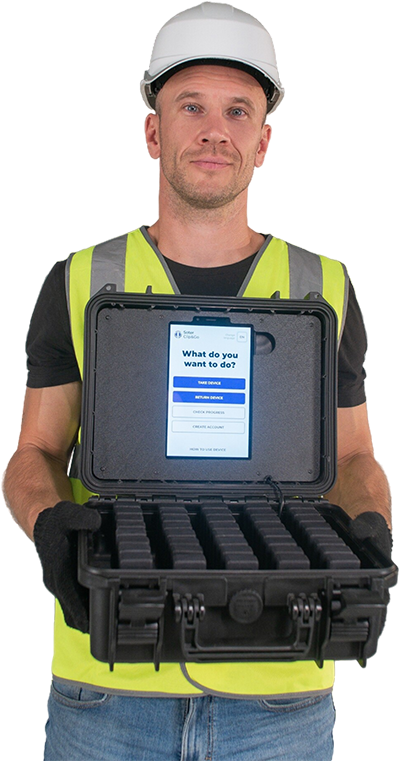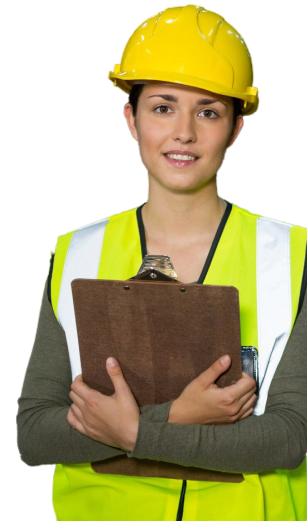ISO 45001 Migration Period Extended! How Can Data Assist in Compliance?
An easy way to determine credibility is to simply look at how a company values safety. Adhering to the new gold standard that ISO 45001 tends to acknowledge shows any customers and the public that employee safety is important to your organisation.

An easy way to determine credibility is to simply look at how a company values safety. Adhering to the new gold standard that ISO 45001 tends to acknowledge shows any customers and the public that employee safety is important to your organisation. Obviously, an invaluable undertaking to possess. Recently, different technologies have begun being implemented to assist and increase safety at the workplace. The use of wearable technology has opened a new era in ergonomics. Risk assessment nowadays can be performed with the use of technology and technical measurements offer the opportunity to collect accurate data in the workplace with high validity and reliability providing assistance for ISO45001 compliance.
The good news is the IAF have recently extended the deadline for migration from OHSAS 18001 to ISO 45001 by 6 months due to the COVID-19 impact. The new deadline is now September 2021.
The new ISO 45001 management system allows integration of things such as worker wellness/wellbeing and provides a lot of wisdom of what is described as a new approach to safety program and culture. Attention in the standard is drawn to leaders in demonstrating that they are actively involved and taking steps to integrate the H&S management system into the overall business processes. Senior management must:
Take an active role and will have responsibility and accountability for the safety of all workers
Be responsible for and demonstrate the promotion of a positive safety culture
Communicate what needs to be done and why it is important
Actively engage with all workers ensuring they know that their say is important, and that management need them to be involved in the health and safety initiatives put forward
Hazard Identification and How Technology Can Assist
If you are familiar with the ISO standards, you’ll be aware that the Plan-Do-Check-Act (PDCA) cycle is used and ‘planning’ is the first step for compliance.
Hazard identification is considered the first step in the overarching Hazardous Identification and Assessment of Risks and Opportunities in Section 6. It is a requirement of organisations to take on a proactive process, looking at how work is carried out, accessing workload, working time and any psychosocial issues.
Anastasia Vasina, Medical Doctor, Physiotherapist and Product Manager at Soter Analytics explains how technology can help with hazard identification, assessments of risks and opportunities:
Hazard identification is not an easy process. Hazardous behaviour varies from person to person, and the number of potential hazards depend on the task and working conditions. In the case of a repetitive and highly variative job it is hard to objectively perform risk assessments. It requires significant time and observation and analysing the data. Data received for one worker can’t be scaled to all the workers due to individual differences in behaviour and movement patterns. This is where new technologies such as wearable sensors have opened a new era in hazard identification. They enable assessment of the task via automatizing the use of standard observational tools, they monitor the worker’s “at risk” movement patterns.
It is common knowledge now that wearables provide big numbers of continuous data, that reflect receptiveness of movements, hour distribution of hazardous movements and day to day variation of movements. These factors allow objective evaluation of the risk, find areas for change and then promote implementation of those changes. New technologies are easily implemented and scaled and are able to significantly save the time of the organisation management. The process of hazard identifications using technology is followed by the process of the hazard reduction, which means that both tasks are being solved almost at the same time.
Hierarchy of Controls
When looking at the overall purpose of the risk assessment process it is pertinent to evaluate the hazards that arise or might arise in the course of the organization’s activities. This is to ensure that the risks to people, arising from these hazards are assessed, prioritized and controlled to eliminate hazards or reduce risks to acceptable levels. The hierarchy of controls shows the principles of a health and safety program to address MSD hazards.
Studies of workplaces have shown that the most widespread changes in favour of an ergonomic intervention involved substantive ‘‘upstream’’ organizational change to support individual behaviour change. Delivering manual handling training affects administrative controls and objective data provides insight on the task which can be leveraged to affect the remainder of the pyramid.
Objective Data
In this ‘planning’ step of the ISO 450001 standard, using valid qualitative objective data combines all exposures and assists organizations with the ability to also track many psychosocial factors in the workplace. Data user reports identify:
Safety champions
Workers resistant to change -an informational key in the promotion of safety culture in the workplace
Displays of work and task intensity
Timelines for hazard fluctuations throughout shifts or weeks – which provides data on organizational work factors and targets work-rest cycles or job rotation
Repetitive hazardous movements around common tasks – identified and reviewed for implementation of task modification, substitution, or requirement for introduction of tools and aids
Data is leveraged to affect the hierarchy of controls. Traditionally, the same level of insight and progression towards improvement have been triggered by an injury and resulting investigation or extensive observation and subjective tools which are resource intensive (time and cost) and synthetic.
The use of data can assist in the opportunities to improve OH&S performance in relation the ISO 45001 standards in the following ways:
Consideration of hazards and risks when planning and designing facilities, processes, plant and equipment, and materials
Modification of working processes including the alleviation of monotonous and repetitive work
Introduction of new technology to ameliorate high risk activities
Introduction of job safety analysis and task-related assessments
Implementation of ergonomic and other injury prevention-related assessments
Apart from identifying all multiple factors that can attribute to a hazard, human factors are part of the pinpointing and hazards should be identified relating to a particular individual. We are fortunate that technology can greatly assist in this area and can positively impact personal safety. With or without a formal management system, organizations have a duty of care to their employees and OH&S professionals who want to keep up with best practices are encouraged to understand the new standard and the wisdom it shares in the upgrade of the safety cultural environment.
Originally published at OH&S Online on July 14, 2020.
About Soter Analytics
Soter Analytics is a global safety science company producing AI-supported wearable solutions that reduce the risk of ergonomic injuries in the workplace. Soter wearables are widely used in logistics, manufacturing, healthcare and other industries, helping leading companies to prevent up to 55% of back & shoulder musculoskeletal injuries.
To see how Soter Analytics can help you improve safety behaviour, engage employees to self-manage their training and prevent workplace ergonomic injuries, simply Book a FREE Demo today.


